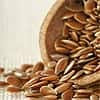
What's hot
What's hot
News flashes are posted here frequently to keep you up-to-date with the latest advances in health and longevity. We have an unparalleled track record of breaking stories about life extension advances.
Antioxidant levels in asthma are reduced with severe and uncontrolled disease
In their introduction, authors Lisa G. Wood and Peter G. Gibson of John Hunter Hospital and the University of Newcastle in Australia note that oxidative stress exacerbates many of the detrimental features of asthma, and that antioxidant defenses are important. These defenses include antioxidant enzymes produced in the body as well as those obtained in the diet, such as vitamins C and E. The current study evaluated 41 patients with asthma. Airway responsiveness, asthma control and clinical asthma pattern were assessed, and blood samples were analyzed for the antioxidants alpha-carotene, beta-carotene, lycopene, beta-cryptoxanthin, lutein/zeaxanthin, the vitamin E fractions alpha, beta and gamma-tocopherol, and plasma antioxidant potential. Drs Wood and Gibson found that patients with airway hyper-responsiveness had lower levels of beta-carotene and alpha-tocopherol compared to those without this characteristic. Reduced plasma antioxidant potential was associated with uncontrolled asthma. For those with a severe persistent clinical asthma pattern, lower levels of alpha-tocopherol were observed in comparison to levels measured in patients with a mild to moderate asthma pattern. The authors remark that while it is possible that reduced dietary intake of antioxidants could have contributed to the varying levels found in the asthma subgroups, increased utilization in response to greater oxidant burden is likely an important factor. “We conclude that asthmatic subjects with airway hyper-responsiveness, uncontrolled asthma and a severe asthma pattern have impaired antioxidant defenses and are thus most susceptible to the damaging effects of oxidative stress,” the authors write. “This highlights the potential role for antioxidant supplementation in these subjects.” —D Dye Flax oil holds promise for reducing osteoporosis
Mer Harvi and colleagues at the National Research Center, in Cairo, Egypt, tested the effect of dietary flaxseed oil in female rats that were rendered diabetic and/or had their ovaries removed to mimic menopause. Other diabetic and ovariectomized rats, as well as normal rats and those that received sham operations, were given a control diet contained oil from corn rather than flax. After two months on the diets, the serum bone formation biomarkers serum insulin-like growth factor (IGF-1, which is dysregulated in diabetes) and osteocalcin were measured, as well as urinary levels of deoxypyridinoline, a marker of bone resorption. The team found that nonovariectomized diabetic rats had lower levels of IGF-1 and osteocalcin and higher urine levels of deoxypyridinoline, which were normalized by flaxseed oil. Additionally, diabetic rats and ovariectomized diabetic rats showed decreased gains in bone mass, mineral content and density compared to ovariectomized and control animals. Due to the more pronounced effect of diabetes compared to ovariectomy on bone health observed in this study, the authors suggest that the disease could be a greater risk factor for osteoporosis than menopause. The omega-3 fatty acids found in flaxseed could help prevent osteoporosis by protecting bone matrix formation and mineralization which are negatively affected by menopause and diabetes. "When feeding flaxseed oil (containing the essential fatty acid alpha-linolenic acid) instead of corn oil (mainly containing omega-6 fatty acid), the ratio of omega-3 to omega-6 fatty acids apparently changes,” the authors write. “We recommend further investigations using animals and humans to confirm the effect of using dietary flaxseed oil to improve bone health and to prevent osteoporosis.” —D Dye Nature's antibiotic
Adrian F. Gombart, of Oregon State University's Linus Pauling Institute, describes research conducted at OSU concerning the regulation by vitamin D of the expression of an antimicrobial peptide gene known as cathelicidin. According to the article, "The capacity of the vitamin D receptor to act as a high-affinity receptor for vitamin D and a low-affinity receptor for secondary bile acids and potentially other novel nutritional compounds suggests that the evolutionary selection to place the cathelicidin gene under control of the vitamin D receptor allows for its regulation under both endocrine and xenobiotic response systems." The article highlights a number of areas in which vitamin D’s effects have been investigated, including its associations with a lower risk of cancer and cancer mortality, its role in regulating immune function by activation of innate immune response and control of over-reaction of adaptive immunity (such as occurs in autoimmune disease), the potential of vitamin D analogs to treat tuberculosis, the possible role of vitamin D deficiencies in influenza epidemics, the association of a vitamin D-related protein with reduced infections and improved survival among dialysis patients, and the vitamin's function in lowering cardiovascular disease risk factors. "About 70 percent of the population of the United States has insufficient levels of vitamin D," Dr Gombart stated. "This is a critical issue as we learn more about the many roles it may play in fighting infection, balancing your immune response, helping to address autoimmune problems, and even preventing heart disease." “Chronic insufficiency and/or deficiency of vitamin D is correlated with the development of many of the chronic diseases that we associate with old age,” Dr Gombart told Life Extension. “Staying vitamin D replete may reduce the severity of many of these conditions.” —D Dye Green tea helps protect against liver fibrosis
Korea University Professor Hong-Yon Cho and his associates tested green tea’s effect in cultured rat liver cells to which acetaldehyde, a byproduct of alcohol metabolism, was added to induce fibrosis. They found that green tea extract dose-dependently inhibited hepatic stellate cell proliferation as well as collagen type 1 expression. In an in vivo experiment in which liver fibrosis was induced by injections of dimethylnitrosamine, rats that received green tea extract in their drinking water the condition were in large part protected from fibrosis, as confirmed by examination of the liver and measurement of a marker of liver collagen deposition. In their discussion of the findings, the authors write that oxidative stress caused by reactive oxygen species and lipid peroxides has been suggested as a cause of stellate cell activation and proliferation, as well as altered collagen gene expression. Therefore, the reduction of oxidative stress by antioxidant compounds found in tea may be the mechanism by which tea extract helps protect against fibrosis. “Green tea provides a safe and effective strategy for improving hepatic fibrosis,” the authors conclude. —D Dye Greater intake of cruciferous vegetable compound may help protect the lungs and other tissues
Professor of Physiology Zhe Lu, MD, along with Yanping Yu, MD, PhD and Szilvia Szep, PhD, investigated the effects of thiocyanate in cultured lung cells. Thiocyanate helped protect these cells from damage caused by the oxidant hydrogen peroxide, which is released in response to injury and infection. Thiocyanate was also protective against an enzyme released by white blood cells during inflammation known as myeloperoxidase (MPO), which produces another oxidant known as hypochlorite. The team additionally found that high concentrations of thiocyanate reduced toxicity from MPO in arterial endothelial cells, a neuronal cell line and a pancreatic cell line, which suggests that the compound could be protective against cardiovascular disease, neurodegeneration and diabetes. “Our findings raise the possibility that insufficient levels of antioxidant thiocyanate may provide inadequate protection from hypochlorite, thus worsening inflammatory diseases, and predisposing humans to diseases linked to MPO activity, including atherosclerosis, neurodegeneration, and certain cancers,” the authors conclude. “In light of the obvious implications of this protective action of thiocyanate against the cell-damaging effect of MPO activity with regard to both CF disease and general population health, my colleagues and I will vigorously investigate the potential health benefit of thiocyanate,” stated Dr Lu. —D Dye Longer telomeres equal longer lives
Telomeres are sections of DNA at the ends of chromosomes that shorten with each division of the cell. As telomeres erode, their host cells stop dividing and enter senescence, which contributes to signs of aging in tissues and organs. Reduced telomere length has been associated with hypertension, metabolic syndrome and dementia. Einstein associate professor of medicine and genetics Gil Atzmon, PhD and his colleagues examined telomeres in 86 Ashkenazi Jews whose age averaged 97, as well as in 175 of their children and 93 control subjects. "Telomeres are one piece of the puzzle that accounts for why some people can live so long," Dr Atzmon remarked. "Our research was meant to answer two questions: Do people who live long lives tend to have long telomeres? And if so, could variations in their genes that code for telomerase account for their long telomeres?" "As we suspected, humans of exceptional longevity are better able to maintain the length of their telomeres," answered coauthor Yousin Suh, PhD. "And we found that they owe their longevity, at least in part, to advantageous variants of genes involved in telomere maintenance." "Our findings suggest that telomere length and variants of telomerase genes combine to help people live very long lives, perhaps by protecting them from the diseases of old age," she added. "We're now trying to understand the mechanism by which these genetic variants of telomerase maintain telomere length in centenarians. Ultimately, it may be possible to develop drugs that mimic the telomerase that our centenarians have been blessed with." —D Dye Plant foods, fiber, vitamin C associated with lower C-reactive protein in men
The study included 385 men and 675 women residing in Portugal. Questionnaires completed by the subjects concerning dietary intake over the previous year were analyzed for the intake of fruit, vegetables, carotenoids, vitamin C, vitamin E and fiber. Participants’ serum CRP levels were categorized as low at less than 1.0 milligram per liter; moderate, at 1.0 to 3.0 mg/L; and high at over 3.0 mg/L. Men in this study were more likely to smoke and exercise than female participants, and had lower levels of CRP. In men whose weight was normal, for every 100 gram increase in fruit and vegetable intake there was a 30 percent less probability of being classified in a higher CRP category. Vitamin C, carotenoids, fiber, and fruit and vegetables separately showed protective associations. No significant associations were found for women. In their discussion, the authors remark that women’s body fat, which tends to be proportionally greater than men’s, is a source of proinflammatory cytokines which could be responsible for the greater amount of inflammation documented in this group. “We could hypothesize that in women the adipose tissue is the most important source of inflammation, and that the effect of nutrients and foods are not enough to be detected,” the authors write. The same explanation was suggested for the lack of a positive effect associated with the nutrients analyzed in this study in overweight men, in whom increased inflammation is likely to overcome potential benefits. —D Dye Antioxidant supplementation could delay hearing loss
Christiaan Leeuwenburgh, PhD and colleagues had previously found that caloric restriction in mice slows the progression of age-related hearing loss while reducing apoptosis (programmed cell death) in the cochlea of the ear as well as lowering an apoptosis-promoting protein known as Bak that is induced by oxidative stress. Bak weakens the membranes of the mitochondria, which are the cells’ energy-producing plants. In the current research, the scientists observed that middle-aged mice lacking Bak had hearing abilities similar to young mice. When cultured inner ear cells these mice were exposed to a chemical that causes oxidative stress, only a minor loss of cochlear cells occurred, leading to the conclusion that Bak promotes cochlear cell death in response to oxidative stress. In other experiments, mice bred to overexpress the antioxidant enzyme catalase in the mitochondria of their cells had less reactive oxygen species-induced cochlear damage and hearing loss at 13 months of age than normal mice. And when antioxidant compounds were fed to normal mice beginning at the age of 4 months, lipoic acid and coenzyme Q10 were associated with less hearing loss and Bak expression at 15 months than mice that received a control diet. “Together, these results provide evidence that enhancing mitochondrial antioxidant defenses through mitochondrial antioxidant supplementation reduces pro-apoptotic Bak expression, reduces cochlear cell death, and delays the onset of age-related hearing loss in mice,” the authors conclude. —D Dye Vitamin C supplementation associated with reduced fracture risk
Researchers at Tufts University, Harvard Medical School and Boston University School of Health evaluated data from 929 participants in the Framingham Osteoporosis Study who were part of the original Framingham Study cohort. Dietary questionnaires completed from 1988 to 1989 were analyzed for vitamin C, vitamin D, calcium and other nutrient intake. The participants were followed for 15 to 17 years, during which 100 hip fractures and 180 nonvertebral fractures occurred. Eighty percent of the hip fractures and 86 percent of nonvertebral fractures occurred in females. Men and women whose vitamin C intake from food and supplements was among the highest one-third of participants at a median of 313 milligrams per day had a 44 percent lower risk of experiencing a fracture than those whose intake was lowest at a median of 94 milligrams. A one third lower risk of nonvertebral osteoporotic fracture was also observed in those with the highest intake. When vitamin C from supplements alone was analyzed, those whose intake was highest at a median of 260 milligrams per day had a 69 percent lower risk of hip fracture than non-supplement users and a less significant reduction in nonvertebral fractures. In their discussion of the findings, the authors explain that vitamin C may protect the bone via its antioxidant action. “More studies are needed to examine these associates in other populations,” the authors write. “Future studies should also consider the possible need to increase the dietary recommended intakes (DRI) for vitamin C, based on accumulating evidence of protective effects on bone and against other chronic diseases.” —D Dye Higher levels of active form of vitamin B3 could help prevent paralysis following injury
NAD+ has been shown to activate proteins known as sirtuins, which aid in stressed cells’ survival. "Boosting NAD+ after injury may prevent permanent nerve death," Dr Jaffrey explained. "Our study is aimed at synthesizing a molecule that, when given soon after injury, may augment the body's production of NAD+ and rescue these cells before they are stressed beyond recovery." "We hope to show that a natural compound that can be produced cheaply and efficiently could be the key to preventing permanent injury," added Weill Cornell Medical College associate professor of pharmacology Dr Anthony Sauve. "We also believe that the compound would be perfectly safe to use in humans, since it is a vitamin that has not been shown to have negative effects on the body when artificially elevated." Nicotinamide riboside compounds will additionally be tested in mice with spinal injuries by the Burke Rehabilitation Center in Westchester, New York. "If this study is successful in animal testing, we hope to study the compound clinically," Dr Jaffrey stated. —D Dye Deadly trio more dangerous than cholesterol
Warwick Medical School Assistant Clinical Professor of Public Health Dr Oscar Franco and his colleagues evaluated data obtained from 3,078 participants in the Framingham Offspring Study over a 10 year follow up period. The team examined the predictive ability of each metabolic syndrome component on the development of the disorder, as well as on cardiovascular disease and mortality risk. Over the follow-up period, all components of metabolic syndrome increased the risk of the disorder’s development, with large waist circumference (indicating central obesity) having the greatest effect. The simultaneous presence of central obesity, high blood pressure and elevated glucose were found to be the most dangerous combination. Participants with this combination of components experienced 2.36-fold increase in cardiovascular events and a 3-fold increased risk of dying over the course of follow-up. "Metabolic syndrome is a highly prevalent condition that is increasing dramatically and affects a large portion of the middle-age population,” Dr Franco stated. “Not all individuals enter the syndrome with identical combination of factors. Certain combinations confer higher risks of incident cardiovascular disease and mortality." "Intense efforts are needed to identify populations with these particular combinations and to provide them with adequate treatment at the early stages of disease," he added. —D Dye Mothers with insufficient folate risk having hyperactive children
The investigation included children of 100 mothers who took part in an earlier study of prenatal nutrition and fetal growth. Blood samples collected during early pregnancy were analyzed for iron and folate. Dietary questionnaires administered during early and late pregnancy obtained information on foods and supplements consumed over the previous three months. The children’s weight and head circumference were measured at birth and 9 months. At a follow-up visit that occurred when the children were 8 years of age, information was obtained from the mothers concerning the incidence of hyperactivity, emotional symptoms, conduct problems, and peer problems in their children. Hyperactivity and peer problems were found to be associated with low maternal folate levels. A reduced total folate intake was also associated with hyperactivity and peer problems. Head circumference at birth, an indicator of brain volume, was positively associated with maternal folate levels, suggesting the possibility of better fetal brain development in mothers with higher folate levels. The authors remark that folate deficiency during gestation can impair cellular growth and reduce fetal brain cells. These effects could contribute to behavioral difficulties later in life. To the their knowledge, the study is the first in humans to link maternal folate with children’s behavioral outcomes, and to demonstrate a possible mechanism by way of fetal head growth measurements. “Our findings further support the hypothesis that maternal nutrition contributes to an individual's development, with potential consequences for their behavior later in life,” Dr Schlotz concluded. —D Dye
|

 An article published online on October 29, 2009 in the
An article published online on October 29, 2009 in the  The results of study published in the latest volume of the
The results of study published in the latest volume of the  A review published in the November, 2009 issue of
A review published in the November, 2009 issue of  In an article published on November 7, 2009 in the
In an article published on November 7, 2009 in the  An article scheduled to appear online in the
An article scheduled to appear online in the  In the November 9, 2009 issue of the
In the November 9, 2009 issue of the  The November, 2009 issue of the
The November, 2009 issue of the  An article scheduled for online publication the week of November 9 to 13, 2009 in the Proceedings of the National Academy of Sciences (
An article scheduled for online publication the week of November 9 to 13, 2009 in the Proceedings of the National Academy of Sciences ( A report published in the November, 2009 issue of the journal
A report published in the November, 2009 issue of the journal  A grant received from the New York State Spinal Cord Injury Research Board will enable scientists at
A grant received from the New York State Spinal Cord Injury Research Board will enable scientists at  An article published online on November 2, 2009 in the American Heart Association journal
An article published online on November 2, 2009 in the American Heart Association journal  In a study scheduled for publication in
In a study scheduled for publication in